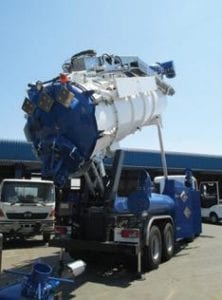Trenchless technology specialist Rescue Rod offers a wide range of products for the industry. Maryke Foulds finds out what is on offer.
According to managing director Bobby Smit, underground construction avoids surface disruptions and provides solutions to overcome environmentally sensitive or challenging terrain conditions where surface construction or open cut may not be viable or cost-effective. “Possibly the most well-known trenchless technique for new construction is horizontal directional drilling, which is used to install all types of underground infrastructure. Rescue Rod has years of experience designing and managing horizontal directional drilling projects.” Horizontal directional drilling uses a drill bit and a positive displacement mud motor, which is controlled mechanically and hydraulically from a drill rig to drill or bore through soils and rock. Drill fluid is pumped through drill pipes from the surface to the mud motor where the motor converts hydraulic energy into rotary energy and spins the drill bit. The location of the bit is measured with sensors and the data is transmitted through the surface via a hardwired electrical connection or an electromagnetic signal (or combination of the two).The cuttings are transported in the open borehole from the bit to the surface in the drill fluid flow after it has exited the mud motor and drill bit.Other services include dealing with pipe bursts or cracking. Smit continues: “During pipe bursting or cracking, and especially in earthenware pipelines with a large joint displacement, a bursting head is attached to a new pipe, which is then winched or thrusted through an existing pipeline while a hammer produces a pulse that cracks the existing pipe, allowing replacement.”
Internal pipeline inspections are another area of specialisation for Rescue Rod. CCTV cameras can inspect and record the status of sewer and stormwater pipelines, usually prior to and after the installation of the trenchless pipeline or rehabilitation. A key focus area is the utility and construction industry where safe excavation is done via vacuum. Smit explains: “Vacuum excavations create airflow and depression vacuum in which previously loosened materials are transported through a hose and deposited into a spoil collection tank. These materials can be broken up safety prior to removal with either high-pressure air or water, or with traditional hand digging tools. There are several benefits to using these systems within utility companies. Large reductions in excavation sizes (up to 50%), reduced costs for infill/backfill, less traffic management and improved H&S with the reduction in cable strikes on buried utilities.







